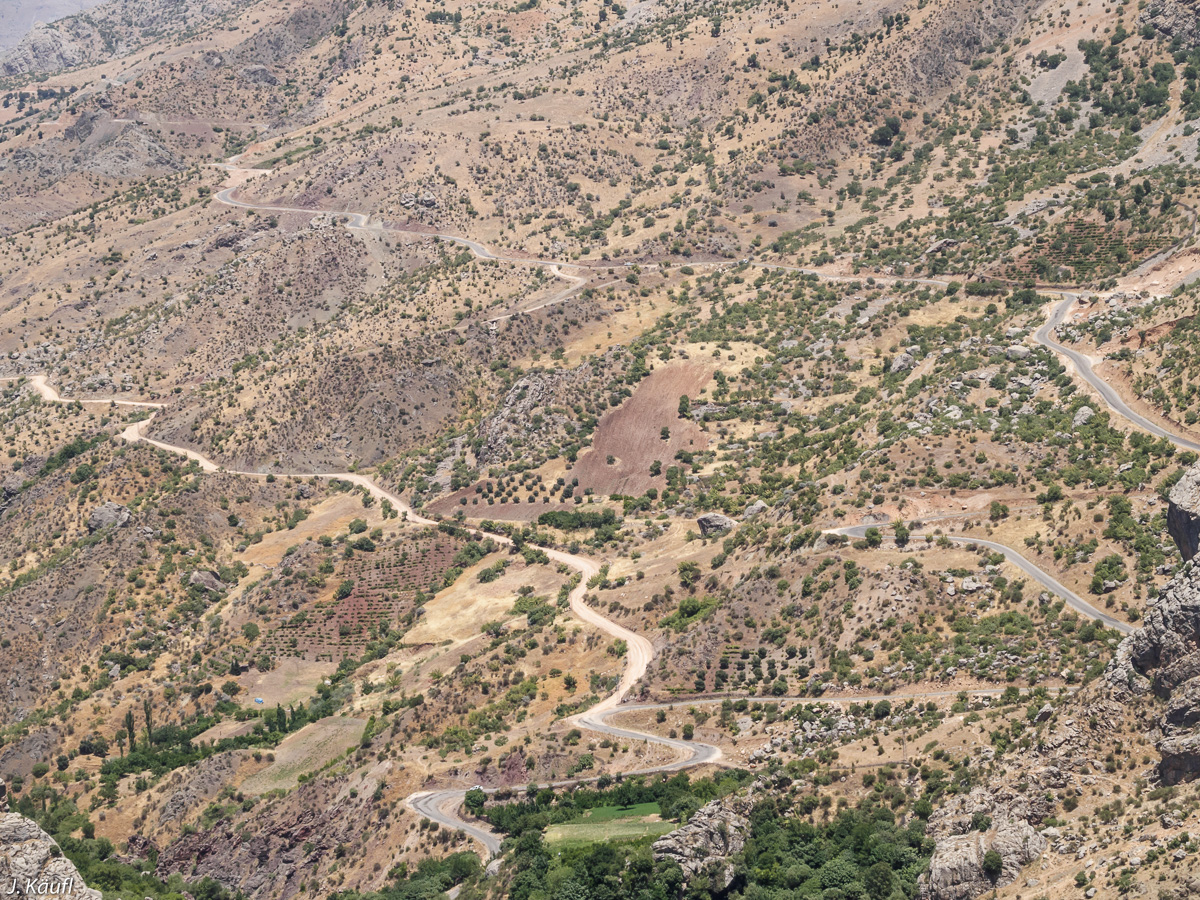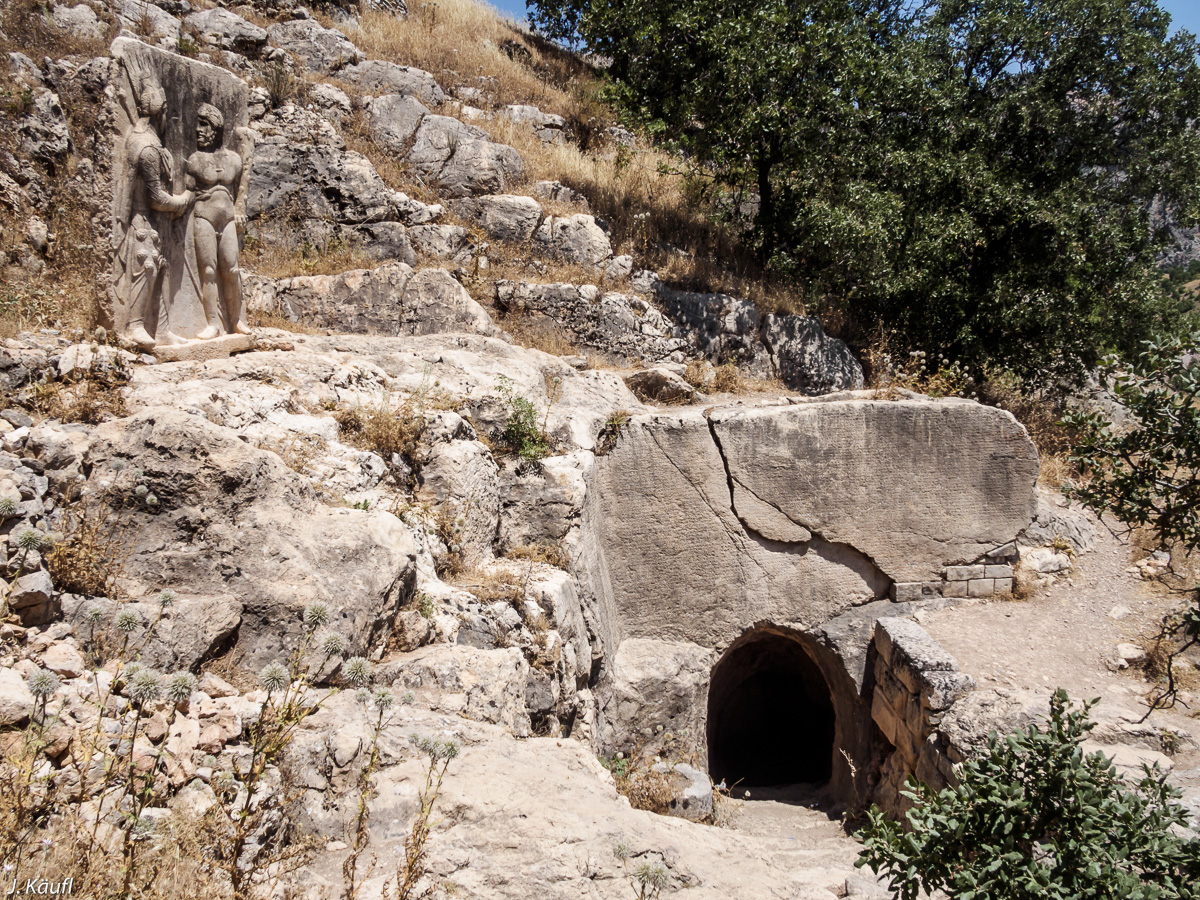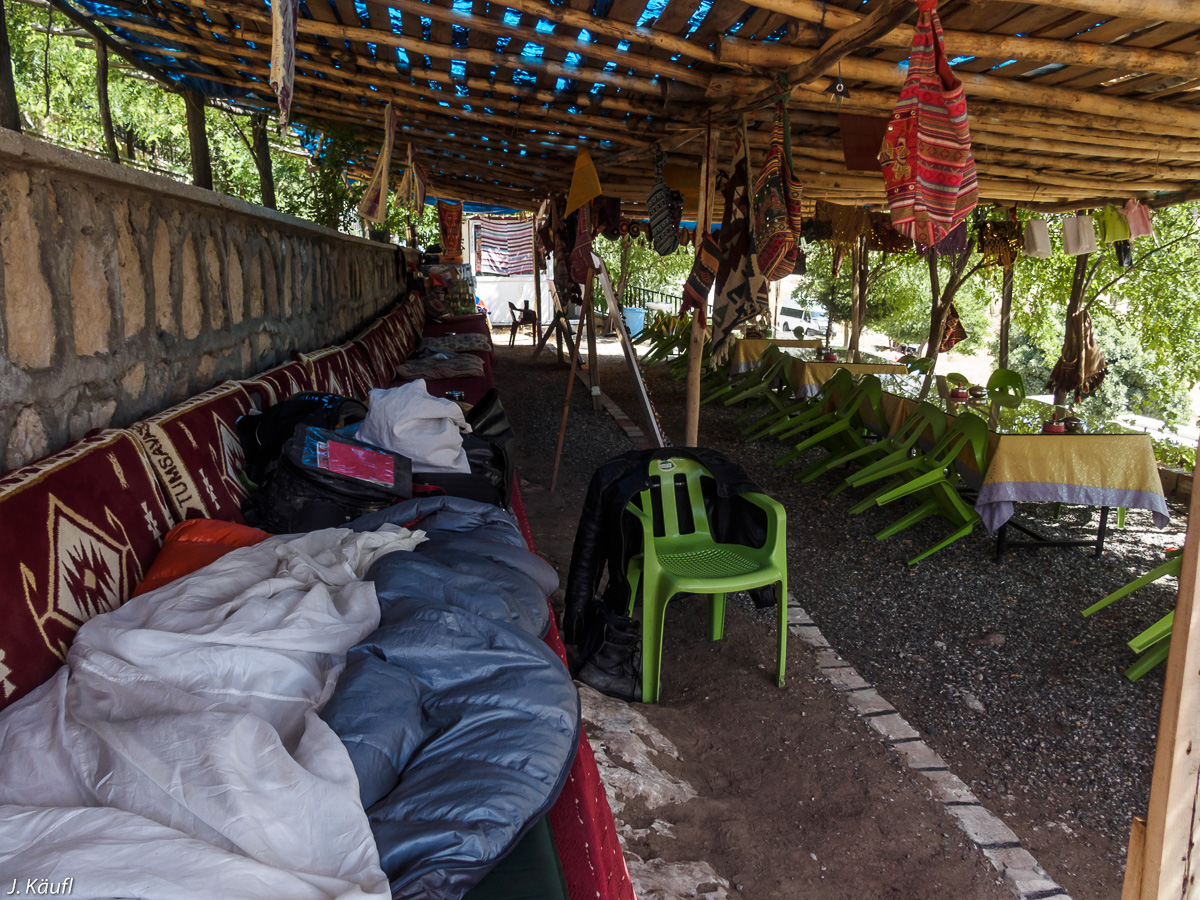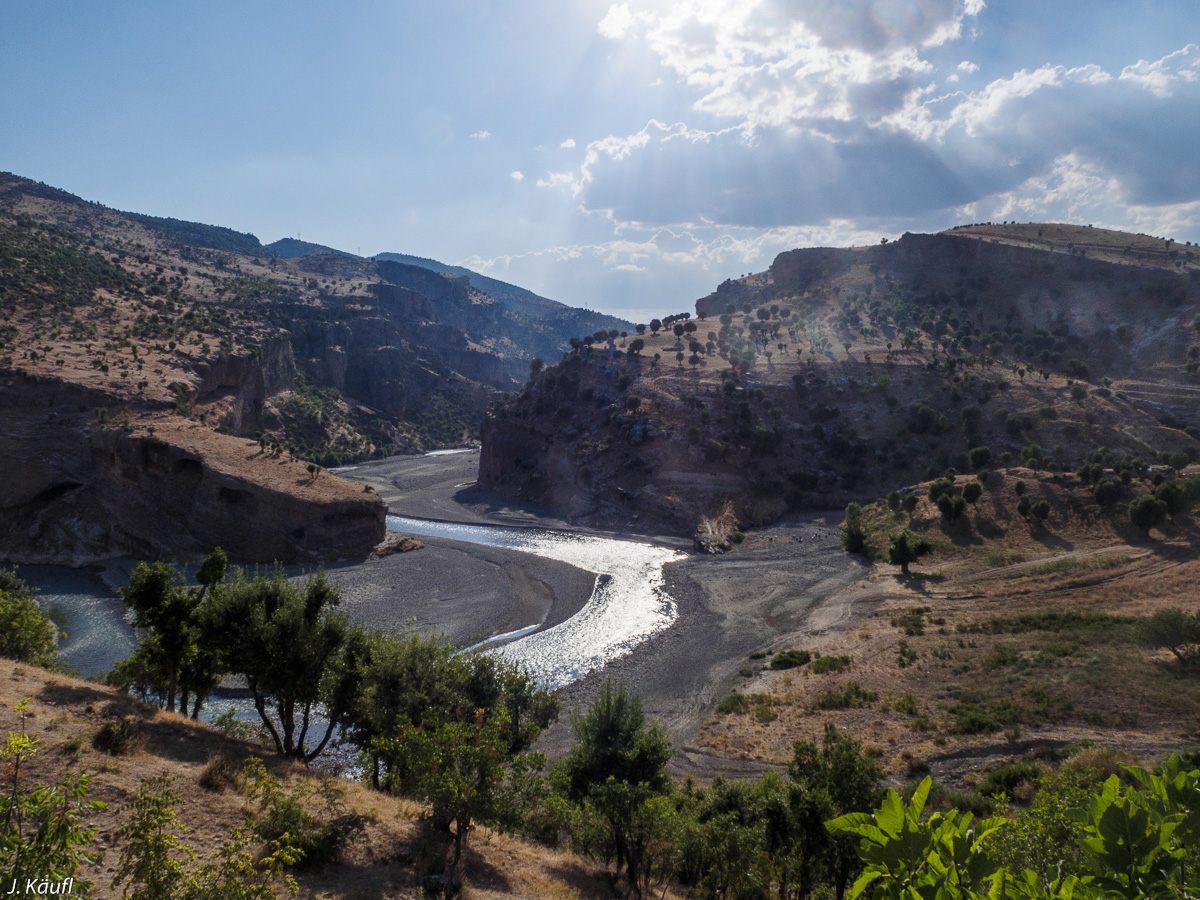In Cappadokia I got the very valuable tip to visit Nemrut Dagı, a mountain in southeastern Turkey. It was on my towards Iran and I didn’t have any different destinations, so why not go there? The distance took me 2 days, crossing mountains and riding through agricultural flatlands. During those days the temperature rose to almost unbearable levels of 40°C. While airflow provided some cooling at higher speeds, slow traffic and stops turned into an ordeal.

As I came to the village of Eskilahta near Nemrut Dagı I was approached by a guesthouse owner, who urged me to stay at his place. After I said that I preferred to camp, he denied the existence of campsites (which were actually marked on my maps), later he admitted existence of one of them by telling me it would be dirty and not recommendable. I finished the day there and the place wasn’t bad, they even had a swimming pool (best thing after a hot day) and a group of turks invited me for dinner.
The next day I spent exploring the ruins of the old Kingdom of Commagene. Despite being rather unknown (at least I didn’t know it before), this place is impressive. The Commagene kingdom existed from the second century BC to the first century AD and was, geographically aswell as culturally, wedged in between the greek and persian empires. Most notable is the megalomaniac king Antiochus I Theos, who considered himself a god and left an appropriately humongous tomb on the 2150 m high peak of Nemrut Dagı, complete with instructions for cultic worship carved in the foundations of his godly image.

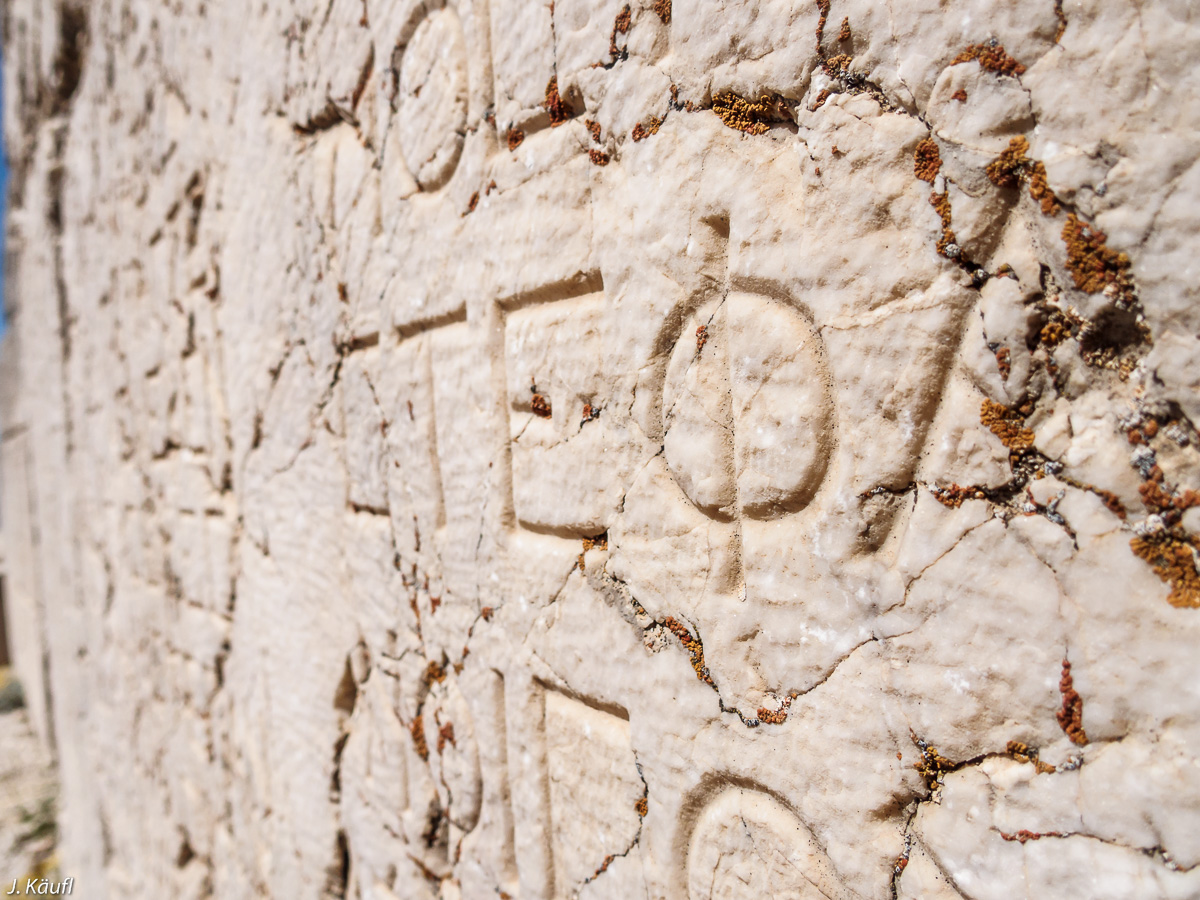


Apart from this tomb, there are caves, ruins related to the Commagene, a castle and a roman bridge crossing the Chabinas Creek. I spent another day in the vicinity of the roman bridge, where I slept on the terrace of a guesthouse. The owner guided me through the Chabinas Creek, showed me the quarry which was used to construct the bridge and caves which were inhabited by romans. He didn’t ask for anything except some small payment to sleep on his terrace. Some of the caves were littered with broken ceramic fragments and rusted pieces of iron and I found a (presumably) roman coin. Unfortunately it is prohibited to take antiques (like roman coins) out of Turkey, the related punishment is rather severe (risk of jail) and the risk of getting caught is high (apparently they use metal detectors at the border checkpoints). I didn’t want to take that risk, so I gave the coin to the guesthouse owner.
Route (Fullscreen):






